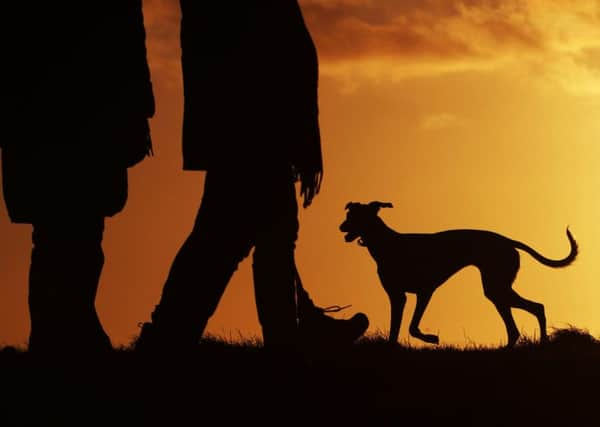Sarah Todd: Lack of respect leads to fatal consequences


Rural communities are invaded every weekend by dog owners who don’t even pretend to have a lead with them.
Time and time again we have politely asked dog walkers if they could put them on leads and they just stare back as bold as brass.
Advertisement
Hide AdAdvertisement
Hide AdIt’s maybe uncharitable; but it would do some of them good to get the shock of a cow protecting her calf up their backsides. Forget “beware of the bull”; hell hath no fury like a hotted-up heifer.
But no, off they march. Double parking outside people’s houses, blocking driveways, sitting in their cars sipping soup and pack-up sandwiches – not spending a penny in the communities they invade.
You’ll have got the picture; this is something of a hobby horse. But the arrogance of walking through a field of somebody else’s animals – whether there is a footpath or not – and refusing to put a dog on a lead is breathtaking and somehow symbolic of the takeover of the leisuretime brigade who think they can do whatever they want.
There used to be respect for farmers and their property. An awareness of the seasons and countryside facts like ewes being likely to abort if worried by dogs when heavily pregnant.
Advertisement
Hide AdAdvertisement
Hide AdSame goes for nesting birds and all sorts of other animals – not just the attacks that hit the newspapers.
Earlier this year farmer Gordon Wyeth lost 116 sheep to a dog attack in what has been described as the worst sheep worrying incident in living memory. The total cost of the dead sheep was expected to be around £17,000.
The latest figures of one dog shot a week for livestock worrying over the last five years have come from research done by BBC Farming Today.
This follows a long-running campaign by industry newspaper Farmers Guardian called “Take the Lead”.
Advertisement
Hide AdAdvertisement
Hide AdRather than rants like this red-head’s, it has level-headedly focused on raising awareness among the general public with posters and such like.
As schoolchildren, most of our friends had some connection to the countryside. They had a granddad or an uncle, or a friend of a friend who worked on a farm. In a very short space of time our population has become so much more urban and this is – in my mind – at the heart of the problem.
Back then, in the 1970s, we had the nature table in the school hallway. Don’t laugh at this rose-tinted reminiscence. There is a lot of common sense behind it.
Found a bird’s nest or a feather? Collected some wool from a wire fence? Maybe stumbled across a horseshoe? It would be gathered up like the crown jewels and proudly displayed on that table.
Advertisement
Hide AdAdvertisement
Hide AdKindly, knowledgeable – in the broadest sense – teachers would give their time to talk about these treasures and we would go on farm visits and learn our Countryside Code off by heart.
We would always take our litter home (unlike many dog owners who leave it in plastic bags hanging from hedges).
Now, in the days of going to school parents’ evenings and discovering your offspring is little more than a number on a sheet of statistics, there is no time given to wider learning.
If it’s not on the Government’s curriculum, nobody gives a flying fig about teaching it.
Advertisement
Hide AdAdvertisement
Hide AdOh, and what were those two words? Countryside Code. Copies used to be given out to children and the importance of how to behave in the great outdoors was hammered home.
When we were young it contained a very firm “keep dogs on leads” but now there is a wishy-washy “keep dogs under effective control”.
The figures of one dog shot every week equates to at least 305 dogs shot on private land for sheep worrying in the last five years. The word “private” is key. It’s great that people are interested in the countryside but it’s not one big free-for-all theme park. Most of it is privately owned. Not by big estates, but by hard-working families who have toiled on the land others treat with such disregard for generations. Their livelihoods depend upon it.
The figures were obtained through a Freedom of Information Request. Out of the 43 police forces contacted, 16 were unable to provide information, meaning the actual number of dogs shot could be a lot higher.
Advertisement
Hide AdAdvertisement
Hide AdThe highest number of dogs shot was in West Yorkshire, with a tally of 54. Just the tip of the iceberg, though, according to the National Farmers’ Union.
It put out a warning in the spring, timed to coincide with the lambing season, estimating that over 18,500 livestock were killed or injured in dog attacks last year alone.
The cost of this to farmers was an estimated £1.1m – up by 35 per cent on the previous year.
Every week dozens of dogs are reported missing. Fair enough, some expensive breeds may well be targeted by professional gangs.
Advertisement
Hide AdAdvertisement
Hide AdBut hang on a moment, Cruella de Vil-style dog snatchers aside, most of them have simply run off.
Their owners are heartbroken, print posters and offer rewards. But if they had been on a lead in the first place…
Sarah Todd is a former editor of Yorkshire Life magazine. She is a farmer’s daughter, mother and journalist specialising in country life.